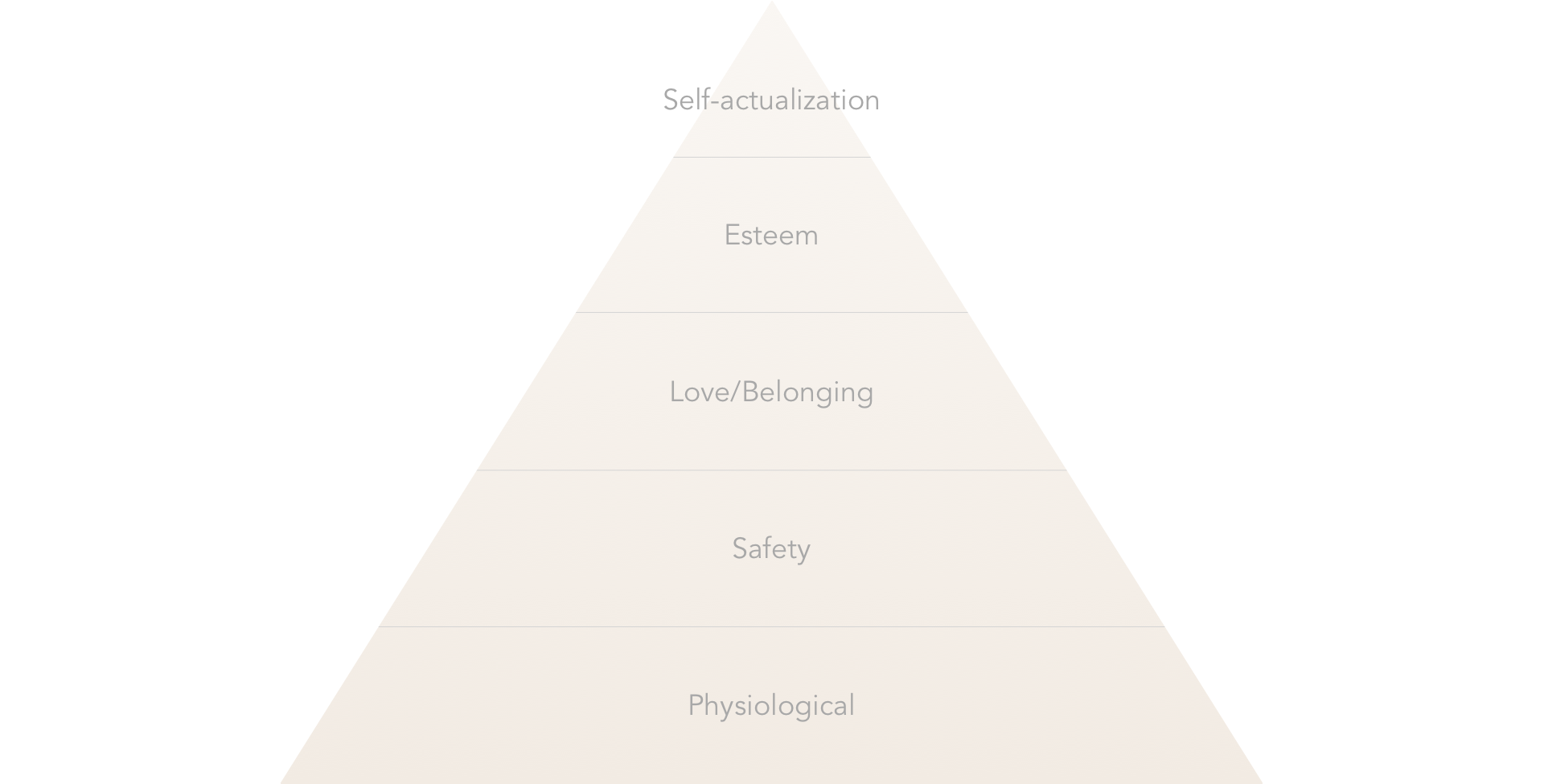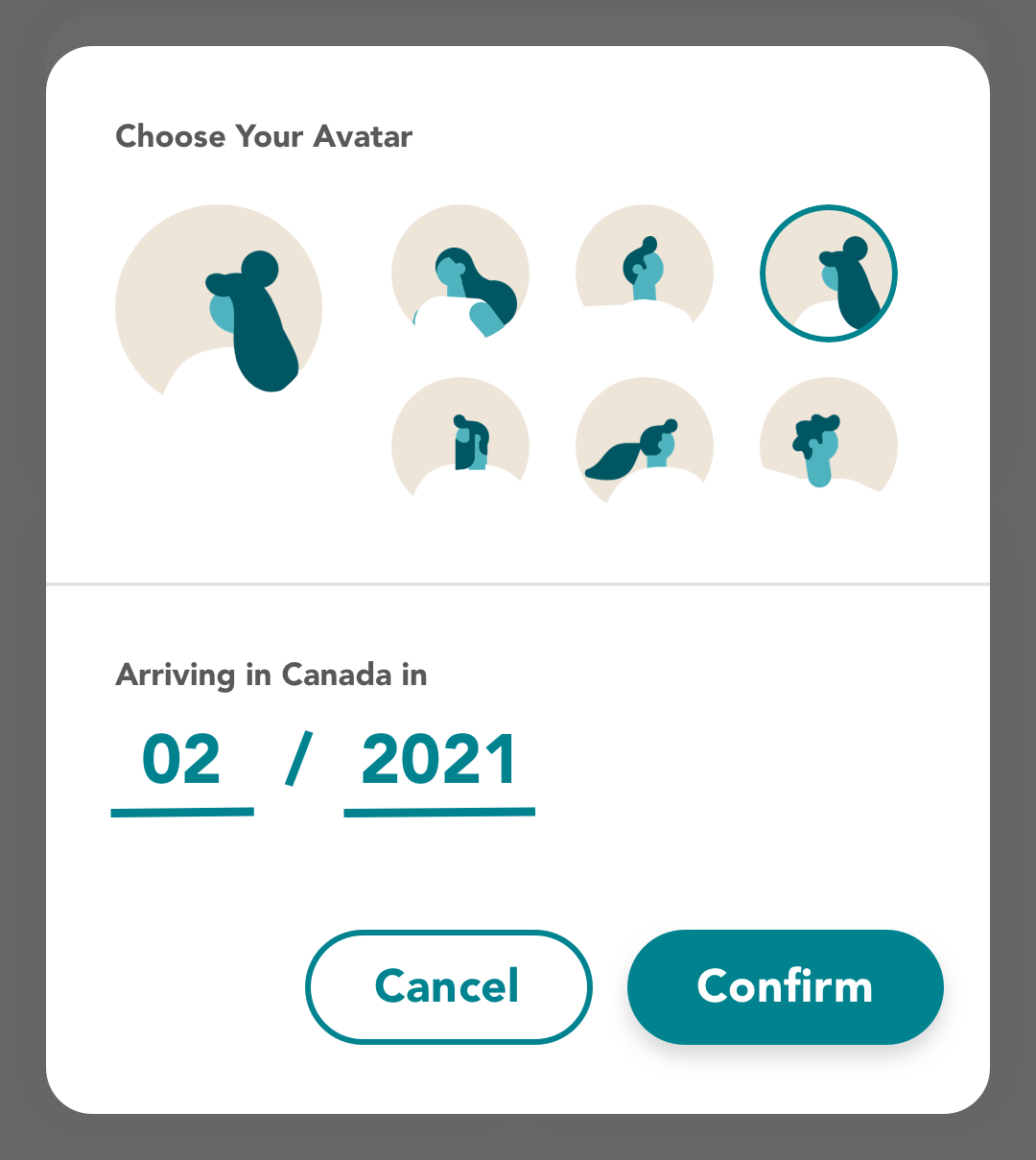

PeaceGeeks is a non-profit organization that empowers communities and peacebuilders through the development of digital tools. As a Design Intern, my responsibility was identical to a full-stack product designer, as well as occasionally designing promotional materials for various events and products. For most if not all projects, I was responsible for assembling research plans and collecting insights from our target population. For Arrival Advisor (later rebranded to Welcome to Canada), one of PeaceGeeks’ flagship projects, I evaluated the design by conducting usability tests with settlement frontline workers and newcomers in BC, Canada. In addition, I also worked closely with other designers, project managers and developers to ensure the feasibility of the product.
Sketch, Figma, Illustrator, Principle, Zeplin, GitHub
Internship
9 months (September 2019 — May 2020)
I moved back from Taiwan to Canada for educational purposes when I was thirteen. At the time, my parents had provided me with everything they could to make my stay as comfortable as possible. They gave me allowances, bought me furniture and even had my aunt to take care of me. Thanks to that, I was able to adapt to this new living environment in almost no time.
Fast forward to last year(2019)'s September, I just began my role as a Design Intern at PeaceGeeks. Excited about the opportunity, I didn't wait to dive right into all the research and design projects. It was then that I got to learn about one of PeaceGeeks' flagship projects named Arrival Advisor. Arrival Advisor is a mobile application that provides accurate and relevant information for newcomers to settle in the province of British Columbia, Canada. Designing for Arrival Advisor, I came to realize the effortless immigration experience that my parents had set up so perfectly for me was merely an illusion.

Arrival Advisor is an mobile app that helps newcomers to settle in B.C. by providing credible relevant information.
Working at PeaceGeeks, new experiences, new challenges, and new lessons never cease to present themselves. While my time at PeaceGeeks had changed my perception of settlements, I also grew my technical skills exponentially by working closely with all the professionals and stakeholders. Besides doing what I already love, which is digital product design, I was also given the freedom to engage in user research with great flexibility. I got to listen to a wide range of newcomers and settlement workers sharing their stories of settling or helping others to move in Canada. My team, which included another designer, a project manager, various developers, and project coordinator were incredibly passionate, friendly and collaborative.

When my team threw me a surprise birthday cake in the middle of a (made-up) meeting. 😂
There are too many lessons to count throughout my internship with PeaceGeeks. That being said, I’ve written a reflection piece and a case study with the aim to share some of the key lessons and perspectives I've learned. While these lessons came from working in a non-profit work environment, they can certainly be applied to any other context as well.
The primary users of Arrival Advisor are newcomers that came from all over the world. The difference in countries of origin not only indicate their diverse cultural backgrounds, but also various proficiency levels in different languages. Therefore, while expanding the available in-app languages, the copywriting used throughout the UI also needs to be concise, understandable and convey in the right tone. For example, during an interview session, a participant pointed out the phrase "Report an issue" as threatening and may discourage people who aren't as proficient in English to provide feedback. The string was later on refined to become "Suggest an update," which was far more neutral. What makes sense in English, might be perceived differently due to the individual's background and their understanding of that language. Some words may not even exist in other languages, so it becomes imperative to stay concise, simple and inclusive when designing for international audiences.

Many design patterns may be recognizable to a lot of us who are more tech-savvy, but what about the ones who aren't? From the interviews we had done with all the settlement workers, we learned that many newcomers aren't necessarily comfortable with technology. For instance, from a past testing session, I learned that participants had trouble discovering a floating action button, which was designed to be visually prominent in the interface.
While there could be many factors (e.g. visual hierarchy, colour, etc..) preventing participants from locating the floating action button, it is crucial to test with real users and evaluate the usability of the feature or product. No matter how standard or common you think your design might be, there are always unexpected exceptions.
One of my greatest delights I had working at PeaceGeeks is perhaps the opportunity to interact with all the newcomers and settlement workers. Hearing people's stories really provided me with the incentive to create products that can make a positive impact on their lives.
Empathy is a crucial part of becoming a successful designer, and one of the ways I learned to build that empathy is to be emotionally invested in people's stories. Indeed, one story will never be able to match exactly any other. If we could really attend to what people have to say and have those sentiments drive the work we do, I believe we’ll create a real, positive impact.

Here is a photo of me helping out during the Canadian Immigrant Fair.
The team isn't big, but that's precisely why I really get to see everyone's dedication in bringing peace to the vulnerabilities that still exist in the world. My time at PeaceGeeks not only helped grow my professional skills but also allowed me to define the type of designer I wish to become: a product designer that prevents harm and brings happiness to people without adverse impacts through compassionate empathy.
It’s been a genuine pleasure and a great fortune to have worked with everyone at PeaceGeeks. While the definition of peace comes in many forms, I am certain that the organization will continue to deliver and support the ones in need.
This is a story I heard from a user talking about her experience with Arrival Advisor. As an app supporting settlement and immigration, Arrival Advisor does a great job of providing related topics and service information for newcomers. However, despite the proven value, users would often uninstall the app as soon as they've learned the information they needed. While the app serves its purpose, I wanted to advance Arrival Advisor by exploring additional values and support newcomers in more ways.
I came across a blog posted by IDEO.org, talking about the impact of designing for higher levels of needs. The article mentions love, belonging, self-esteem, and self-actualization. It was then I realized information on Arrival Advisor often focused on newcomer's basic settlement needs, yet rarely addressed users' emotional needs as a recent immigrant. So what if, instead of necessity, we simultaneously design for what the newcomers want as well?

During my time at PeaceGeeks, I was fortunate to meet newcomers from various countries and cultures. While hosting interview sessions and hearing their stories, one thing continually stood out to me: many newcomers have a passion for sharing their experience and helping other newcomers in their settlement journeys.
Having to go through the same if not similar journey themselves, many experienced newcomers understand the struggles others are facing or will encounter. The empathy ultimately was what drove them wanting to help other newcomers overcome their settlement challenges. A participant I recently interviewed had once mentioned that she would like to help other newcomers and share what she learned from her settlement days. Meanwhile, another participant had told us that she would like to meet and exchange experiences with other newcomers.

These conversations with newcomers had ultimately led me to the inspiration for Arrival Advisor Community (AAC), an in-app community forum that encourages experienced newcomers to share experience and answer questions in order to help others who have yet to settle down in BC. While the feature is designed for newcomers' wants, it also leverages the settlement information provided within Arrival Advisor. That way, users could continue to make use of the knowledge they learned even after their settlement journey has come to an end. Thus, users are given a new motivation to retain Arrival Advisor.
Complying with the app privacy policy, AAC requires no personal information. It does, however, ask users to optionally provide their arriving time in Canada. This is so newcomers can get to know a bit about each other and develop rapport without exposing the individual's identities. With AAC, users can post questions asking for settlement advice and share their experience and knowledge with the other newcomers. I've designed a call-to-action feature, so that unanswered questions could always be discovered, leaving no one in the dark. Newcomers can also like posts they found valuable to raise their exposure, allowing other users to locate these posts.
By indicating your time of arrival in Canada, newcomers get to know a bit about each other without exposing the individual's identities.

For future newcomers who’ve yet to arrive in Canada, they can choose a future date which will change ‘Been In Canada since’ into ‘Arriving In Canada In.’
There are two primary actions in AA Community, 1) post questions for settlement advice or 2) share experience to help address unanswered questions.
Aside from the two main actions, users can always access different posts/questions on the forum. They can like and reply to the post or any other sub comments.
Too often, when we're designing for social impact, we tunnel on solving people's most basic needs. While these needs are certainly crucial and necessary to be addressed, we should also look at the top of Maslow's pyramid and account for their higher level of needs. Immigration by no means is a cakewalk. Each newcomers' experience, knowledge and settlement stories are all valuable and deserve to be celebrated and treasured. By utilizing the existing settlement information, Arrival Advisor Community can become a great source for informational exchange between the newcomers. In addition, having a community also empowers newcomers to help each other, opening up more future opportunities with the potential increase in the user base.
Instead of describing and explaining all the research and design decisions, I wanted to use Arrival Advisor Community as a case study to present a perspective — to design for users' wants. By creating this project concept, I've learned a new definition of designing for holism. The ecosystem in the physical world is no doubt essential to the product, but what's equally important is to account for the various levels of needs of each individual. Regardless of the effectiveness, a lasting human-product relationship is often made possible because people want to use the products or services, not because they have to use them.
Thank you for reading!